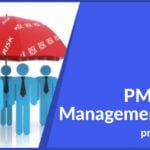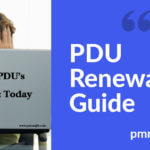 It is highly likely that at some part of your career, you will decide to move roles (either internally or externally). While you will be very excited and focused on what the new opportunity will bring, you will also need to consider how you will complete a seamless handover of your current role. In this post I want to focus on how this can be achieved through a PMO Handover Plan.
It is highly likely that at some part of your career, you will decide to move roles (either internally or externally). While you will be very excited and focused on what the new opportunity will bring, you will also need to consider how you will complete a seamless handover of your current role. In this post I want to focus on how this can be achieved through a PMO Handover Plan.
Why is handover important?
Before covering the steps that you can take to facilitate a successful handover, it is worth considering why this is important:
Reputation – hopefully you have played a part in establishing a successful PMO, it is probably the reason you secured your new role. So why risk reputation by not paying attention to the handover. Remember news does travel.
Commitment – you have probably invested considerable effort an emotion and have a strong attachment for the PMO to flourish even after you have left.
Loyalty – you are leaving colleagues who have shared the journey and you want to ensure that you don’t “drop them in it”.
Future Role – you never know what may happen in the future and you may wish / need to return to the team in the future. Leaving on good terms and taking the effort to execute a good handover will hopefully leave the door open.
Preparation
As with any project, preparation is very important. As soon as you’re aware that you may be moving on, start to construct a plan to cover:
- Activities
- Handover Document
- Handover Review
- Handover Training
Activities
Collect all of the activities that you perform. This is both planned and ad-hoc. I suggest that this is done by capturing them as a simple list under the headings Planned and Ad-hoc.
It is a good idea to capture them in the back of the notebook as it will be with you when you are away from your desk in meetings. This allows you to capture items you have missed when they occur. I find this often happens when you are in a meeting.
Handover Document
Transfer the activities into an electronic document. This should be formatted so that you can capture activity, description (explain purpose of activity), when (date / time needs to be completed), output and proposed new owner.
This should be split into 2 sections. The first covering all of the planned activity and the second the typical ad-hoc requests.
This should then provide a concise record of all activities that can be used to handover tasks. It is important to include all relevant information including key contact points, location of documents, etc.
You should make sure that the document includes any outstanding items that need to be addressed.
Handover Review
This will typically be with your manager and / or person assigned to take a lead on the handover. The purpose is to walk them through the Handover Document to ensure that they have a clear understanding of activities.
This will allow for the identification of:
- Gaps
- Items that are not clear
- Activities that can be removed
A very important aspect is agreeing who each task should be handed over to so as to allow for training.
Handover Training
Handover sessions should be set-up with all of the proposed new owners. The session(s) should be used to formerly handover the activities. These must be structured and not rushed as you want to ensure that the new owner has time to understand and digest.
It is advisable to start this as early as possible so as to allow time for follow up questions before you formerly leave.
Make sure that you do not just assume that just because you have completed the meeting that the new owner understands. Make sure that you seek positive confirmation that they are happy that they have the information they require.
General Tips
Make sure that all important documents, e-mails, etc are stored in the designated shared location.
Keep your line manager appraised of progress and any concerns you have on the knowledge transfer.
If you are moving internally and if it is viable, make it known that you will be available to answer questions, provide clarification, etc even after you have moved to your new role.
In summary
If you are going to move roles, make sure you plan an orderly exit. This will ensure that your current PMO continues to perform, will assist your colleagues, safe guard your reputation and hopefully mean that the door will be open if you should to return some point in the future.





